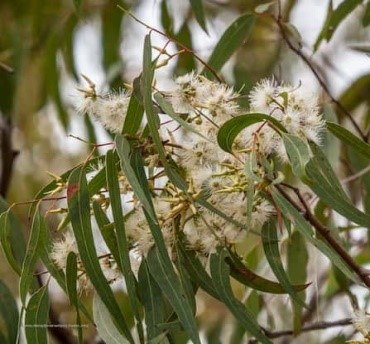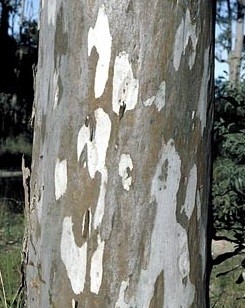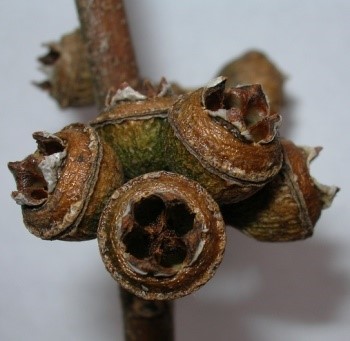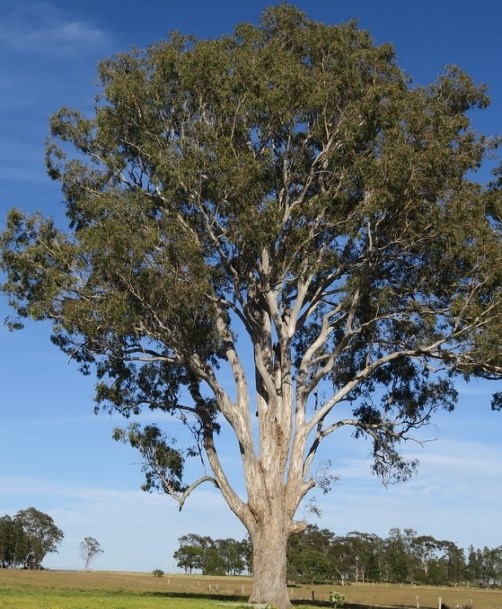Trees
Eucalyptus tereticornis Sm.
Eucalyptus tereticornis Sm.
Description :
A
large, evergreen tree, up to 40 m tall with diameters of 1 to 2 m. It has a
straight stem, and the crown is spreading and open. The leaves are simple,
narrow and lance shaped, 15 to 20 cm long. The leaves a unique eucalyptus smell
when crushed. The bark is smooth, whitish and more or less deciduous. The
small, white flowers, which occur in clusters, usually blooms between January
and April. The fruit is a capsule containing many small seeds and is shaped
like a half globe. The capsules mature between August and September. Young
trees may be attacked by termites, but with age becomes pest free. It is
reproduced both from seed and by vegetative means. Seed sealed in air-tight
containers will remain viable for long periods in cold storage. It grows very
fast. Height growth rates of 0.3 m/month for young stands have been reported.
MAI of 12 to 25 m3/ha/yr has been reported over a 15-year rotation. Wood
is red to reddish brown with twisted and interlocked, medium coarse, uneven
texture grains. Strength is high with specific gravity of 0.70 and a calorific
value of 4900 kcal/kg.
Distribution :
The
tree is native to Australia. It is widely planted in arid areas throughout the
world. In Pakistan it is successfully planted throughout the plains and in the
hills. A very intolerant tree that grows on a variety of soils. It does well on
saline, sodic and waterlogged sites. It is adapted to a precipitation zone of
800 to 1500 mm/yr or more. It prefers a semi-humid warm hot, sub-tropical
winter/monsoon, climate with a temperature range of 0 to 40°C at elevations up
to 1500 m. It coppices easily and can be grown in mixed stands. It is frost
hardy and can tolerate hot droughty conditions if irrigated or if there is a
shallow water table.
Uses :
This
is a good tree for reforestation projects because of its fast growth and wood
value. Farmers like it because of its fast growth. This is an excellent farm
forestry tree ideally suited for planting on saline, sodic and waterlogged
sites. It could be planted on wastelands and for erosion control. Also used in
carriages, fuel, charcoal, furniture, shelterbelt, apiculture, pulp, fiber
board, and erosion control.



